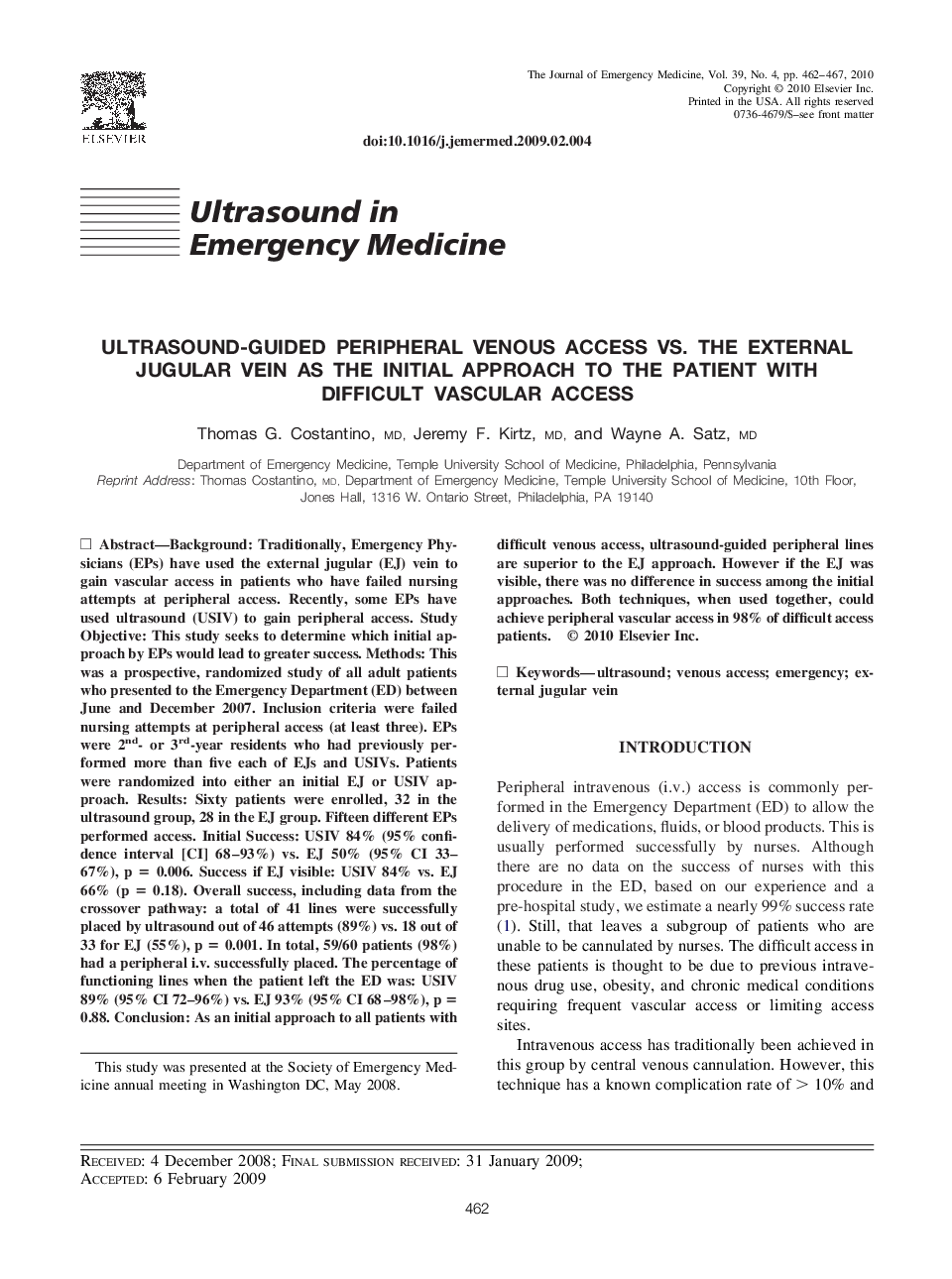| Article ID | Journal | Published Year | Pages | File Type |
|---|---|---|---|---|
| 3249807 | The Journal of Emergency Medicine | 2010 | 6 Pages |
Background: Traditionally, Emergency Physicians (EPs) have used the external jugular (EJ) vein to gain vascular access in patients who have failed nursing attempts at peripheral access. Recently, some EPs have used ultrasound (USIV) to gain peripheral access. Study Objective: This study seeks to determine which initial approach by EPs would lead to greater success. Methods: This was a prospective, randomized study of all adult patients who presented to the Emergency Department (ED) between June and December 2007. Inclusion criteria were failed nursing attempts at peripheral access (at least three). EPs were 2nd- or 3rd-year residents who had previously performed more than five each of EJs and USIVs. Patients were randomized into either an initial EJ or USIV approach. Results: Sixty patients were enrolled, 32 in the ultrasound group, 28 in the EJ group. Fifteen different EPs performed access. Initial Success: USIV 84% (95% confidence interval [CI] 68–93%) vs. EJ 50% (95% CI 33–67%), p = 0.006. Success if EJ visible: USIV 84% vs. EJ 66% (p = 0.18). Overall success, including data from the crossover pathway: a total of 41 lines were successfully placed by ultrasound out of 46 attempts (89%) vs. 18 out of 33 for EJ (55%), p = 0.001. In total, 59/60 patients (98%) had a peripheral i.v. successfully placed. The percentage of functioning lines when the patient left the ED was: USIV 89% (95% CI 72–96%) vs. EJ 93% (95% CI 68–98%), p = 0.88. Conclusion: As an initial approach to all patients with difficult venous access, ultrasound-guided peripheral lines are superior to the EJ approach. However if the EJ was visible, there was no difference in success among the initial approaches. Both techniques, when used together, could achieve peripheral vascular access in 98% of difficult access patients.
